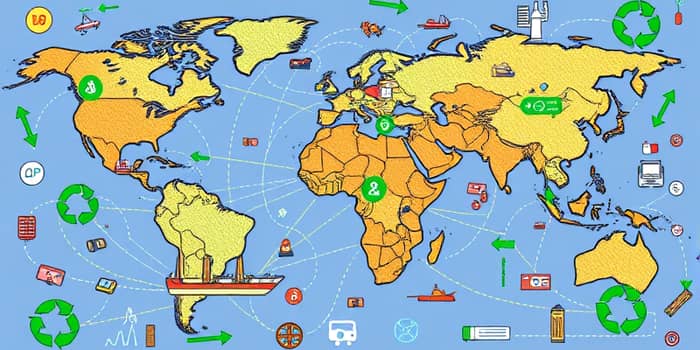
As companies navigate an increasingly uncertain world, supply chain diversification has emerged from back-office discussions to a strategic imperative at the highest levels of leadership. No longer viewed as an operational detail, supply networks now demand the attention of boards and C-suites ready to confront geopolitical tensions, pandemic shocks, regulatory demands, and cost volatility head on.
The combination of rising trade wars, shifting alliances, and sanctions has caused geopolitical tensions to reshape strategies across industries. Firms that once relied heavily on single regions are now rethinking their footprint to avoid concentration risk.
Meanwhile, the COVID-19 pandemic exposed massive vulnerabilities in global chains, turning inventory shortages and shipping snarls into boardroom battles. Supply chain management has leapt from a back-office function to a strategic mandate, as executives demand resilience and agility.
At the same time, regulatory pressures around labor practices, environmental, social, and governance (ESG) criteria, and sustainability reporting have increased the need for greater supply chain visibility and compliance. Economic uncertainty—tied to inflation, fluctuating tariffs, and raw material price swings—adds another layer of complexity, motivating firms to spread risk across geographies.
Recent surveys and research reveal how rapidly companies are shifting their approaches:
These numbers confirm a clear shift: organizations are not only diversifying but also investing in digital capabilities to map dependencies and simulate disruptions before they strike.
Companies are deploying several strategic levers to manage cost-risk tradeoffs and build resilience:
These responses reflect a holistic view of supply chains as interconnected ecosystems, requiring both technological innovation and cross-functional collaboration.
Leading technology firms are at the forefront, using automation, robotics, and execution software to accelerate throughput and quality. By integrating digital twin technologies, they create virtual replicas of networks to predict and prevent bottlenecks.
In consumer goods, companies are deploying sophisticated Supplier Relationship Management (SRM) platforms to handle an expanding roster of partners. This digital lens allows for greater transparency across networks and faster response to compliance or performance issues.
Automotive manufacturers are forming cross-functional teams with procurement, logistics, manufacturing, and sustainability leaders. These teams reconcile trade-offs—choosing suppliers not just on cost, but on carbon footprint and labor practices as well.
Despite progress, several challenges loom:
Organizations must navigate these questions with robust risk management and clear governance structures.
The decade ahead will be defined by the ongoing tension between resilience and efficiency. Firms will need to make nuanced, situational tradeoffs as they balance cost targets with risk appetites.
AI and data-driven networks will continue expanding, but real value will come only when technology is tailored to specific vulnerabilities and operational realities. Firms that simply bolt on digital tools without clear strategy may see limited benefits.
We are entering a post-globalization era characterized by a shift from just-in-time to just-in-case strategies. This hybrid model blends speed, efficiency, and resilience to accommodate an ever-present polycrisis—where multiple disruptions can overlap.
Workforce impacts cannot be ignored. Upskilling employees in data analytics, digital tools, and sustainability practices will be critical to support evolving supply chain structures.
Supply chain diversification has moved to the top of corporate agendas, driven by a unique mix of geopolitical shifts, pandemic lessons, regulatory demands, and technological advances. Companies are actively reconfiguring global networks, adopting AI and digital twins, and committing to circularity to navigate a riskier environment.
Although challenges remain—particularly in balancing complexity, cost, and compliance—the path forward is clear. Leaders must embrace complexity, foster cross-functional collaboration, and be willing to make strategic tradeoffs. In doing so, they will build more resilient, adaptable, and sustainable supply chains capable of weathering whatever the future holds.
References













